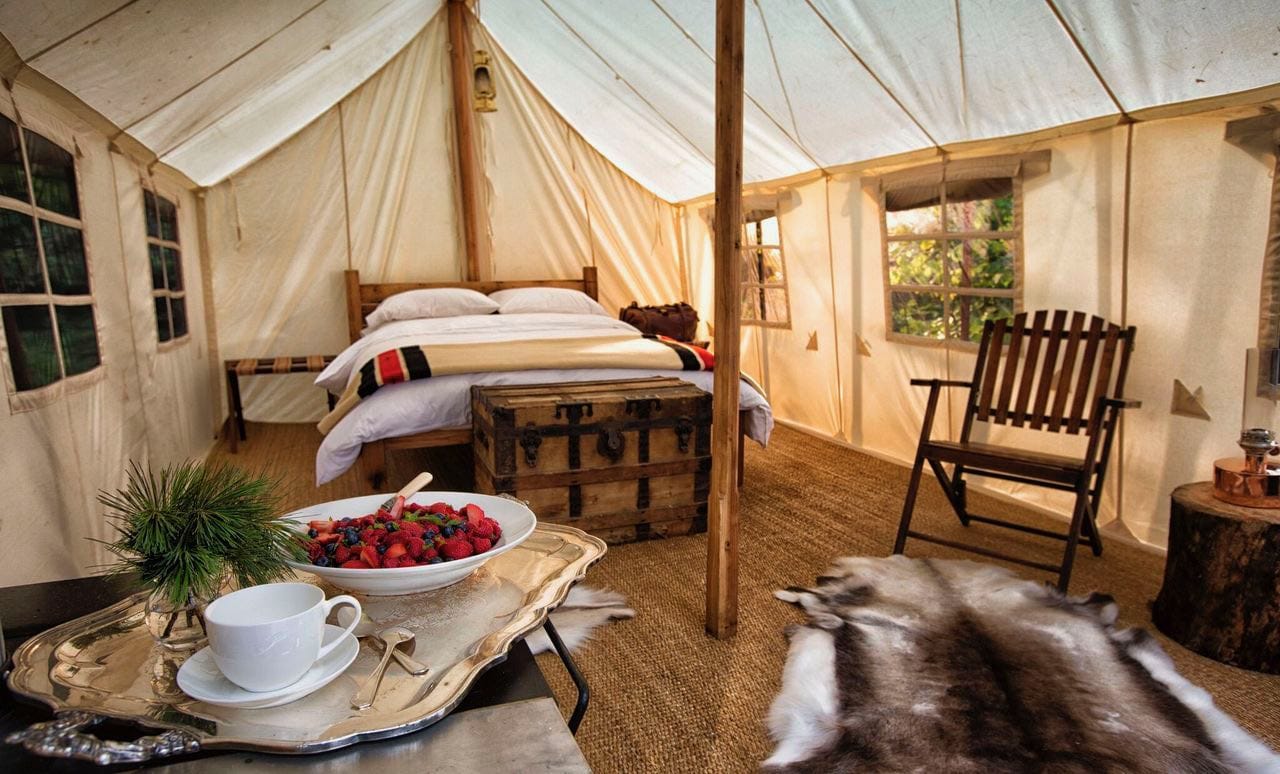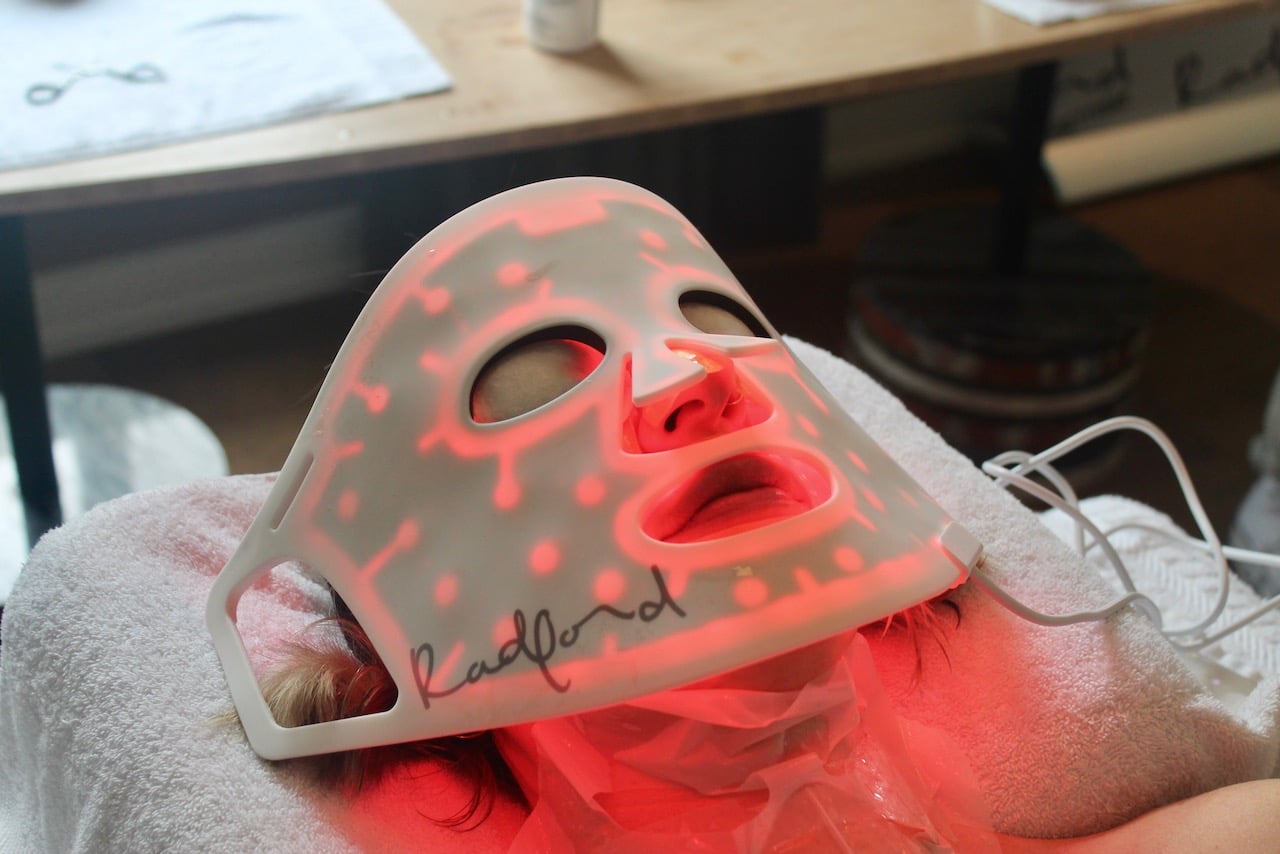Tell anyone that you’re planning to spend your weekend in Detroit and then watch their eyebrows shoot up like a question mark. They’ll ask “Why?” and warn you that the city is broke, with off-the-chart-homicide rates and nearly 80,000 abandoned buildings and forsaken homes that sell for $1. “Detroit’s a shit show. You’ll get killed there.” Mind you, everyone that chirped these wild warnings to me had never even set foot in the city!
I’ve been traveling the world for 10 years and have had my fare share of family, friends and eves dropping strangers throw in their two cents on what destinations are on their must avoid list. If I had followed along with their fears I would have never had the chance to suss out the truth for myself. While the mainstream media has a propensity to sensationalize, I’ve often been surprised by the top notch experiences I enjoy while destinations are being vilified in the news. I slurped spicy noodles in Northern Thailand when the Bangkok Airport was closed for days due to a military coup, fulfilled my lifelong dream of walking in the footsteps of Pharaoh’s while on a Nile cruise of Egypt last year when most governments warned “avoid non-essential travel” and recently flew to Brazil in May while stories of Olympic and Zika virus doom hanged over the headlines as the president prepared to be impeached.
As a seasoned traveler I’ve learned to love the ugly duckling. If someone tell’s me “don’t go there,” my impulse is to prove them wrong and on my recent visit to Detroit this story rang true. While the city does have a bombed-out, apocalyptic vibe, it’s these same qualities that fuel a raw urban energy you won’t find anywhere else. Artists, entrepreneurs and young people are moving in, and a DIY spirit pervades. They’re converting vacant lots into urban farms and abandoned buildings into cafes and museums. Dive into Detroit she’s ripe for the picking!
Best Things to Do in Detroit
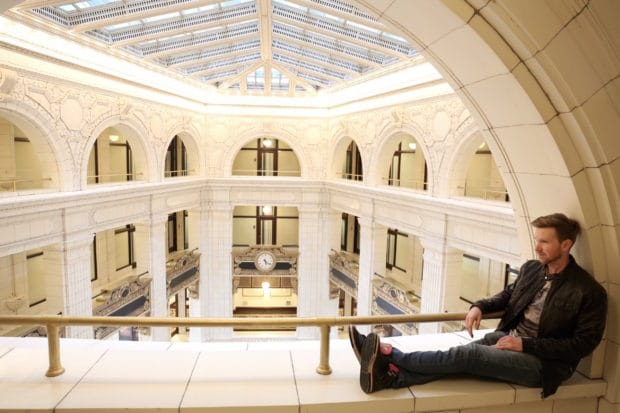
Aloft Detroit at The David Whitney
The city’s newest hotel is located right downtown, a stones throw from the Fox Theatre, Oprah House and Comerica Park. Aloft Detroit is located in the historic David Whitney, following a two year historical renovation, the iconic office building has been restored to its former glory. Originally completed in 1915, the 19-story building represents America’s Golden Age. The building was designed by renowned architectural firm Daniel H. Burnham & Co, and features a Neo-Renaissance style exterior, four story gold-leafed atrium and glazed brick facade.
Aloft Detroit at The David Whitney features 136 guest rooms designed to fit that millennial lifestyle. Enjoy fast and free WIFI to keep yourself connected, streamlined storage to keep organized, and oversized showerheads to keep you feeling refreshed.

The Henry Ford
If Disney created an automobile inspired theme park it would be The Henry Ford. You could spend days strolling through the pretty property, which feels a bit like you are walking around an Ivey School campus. The Henry Ford sits on 250 acres and showcases 300 years of history via 26 million artifacts. The experience offers an excellent education and insight into some of America’s greatest innovators.
Start off at Greenfield Village, a vast outdoor museum spread across 80 acres. There are 83 authentic historic structures, from the lab where Thomas Edison gave the world light to the workshop where the Wright Brothers gave us wings, the building where Abraham Lincoln practiced law and the farmhouse where Henry Ford grew up. Along the way you can catch a ride on a Model T and jump on a real steam-powered locomotive.
Next up, skip into The Henry Ford Museum which features Ford’s vast collection of artifacts documenting the genius of the American people. It has a jaw dropping collection of cars, many of which hold historical significance, from US Presidential vehicles to the actual bus which made Rosa Parks so famous during the Civil Rights movement.
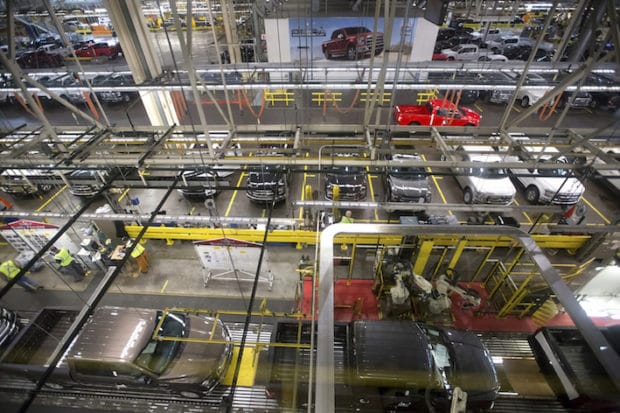
Ford Rouge Factory Tour
Finish your visit by adventuring through a real-life truck plant, view one of the world’s largest “living roofs,” and see a gallery of iconic Ford vehicles via Ford Rouge Factory Tour. Visitors also enjoy two exciting theatre experiences, from a multi-sensory film about the making of the new Ford F-150 truck filled with jaw-dropping special effects, to a short documentary about the factory’s past featuring rare archival footage.
You May Also Enjoy Reading…
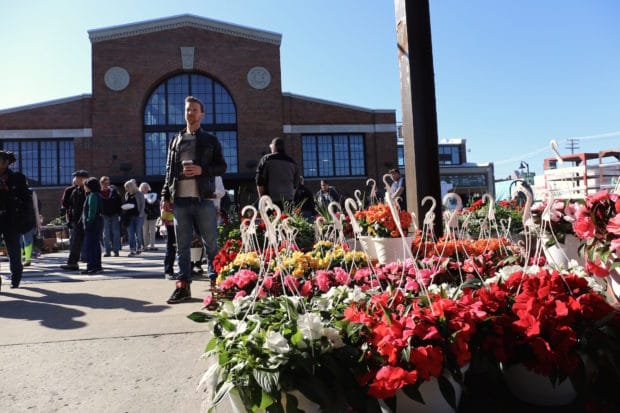
Eastern Market
The best place to people watch in Detroit and really see the city’s colourful mix of cultures is by visiting the Eastern Market on a Saturday morning. It’s America’s largest historic market, a 4.5 acre celebration of the freshest, most wholesome fruits, vegetables, speciality foods, flowers, art and live music. During the busiest months over 150 vendors can be found here. Highlights include cheesy slice at Supino Pizzeria, butcher block chops at Gratiot Central Market, coffee sips at Germack Pistachio Company and a few slippery scoops of Mackinac Island Fudge at Mootown Ice Cream.
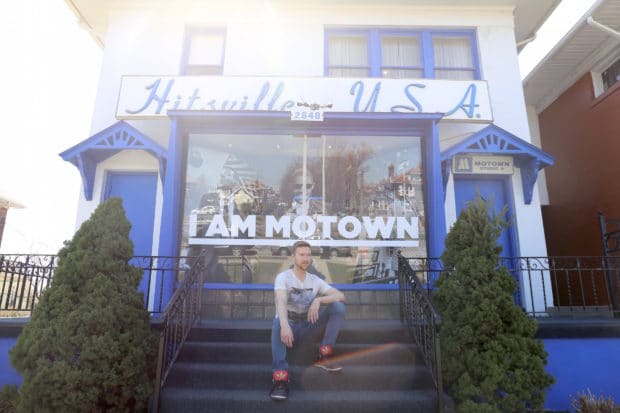
Motown Museum
Step into an era of musical magic on a visit to the Motown Museum. Tour Hitsville U.S.A, the birthplace of Motown Sound. Stand where the Temptations, Four Tops, Miracles and Supremes – and many more of your favourite Motown artists and musicians – recorded their famous songs. Learn how Berry Gordy started it all with an $800 loan from his family. You’ll even be invited to sing a few bars of a favourite Motown tune in the legendary Studio A.
Tour guides are wildly energetic (think summer camp counselor after sipping too much coffee) which gets the group into a lively mood as you march through the museums fascinating history. Highlights include black fedora and bedazzled glove donated by Michael Jackson, archival photos of Diana Ross singing before she found fame and the restored apartment where Motown’s founder and his family lived.
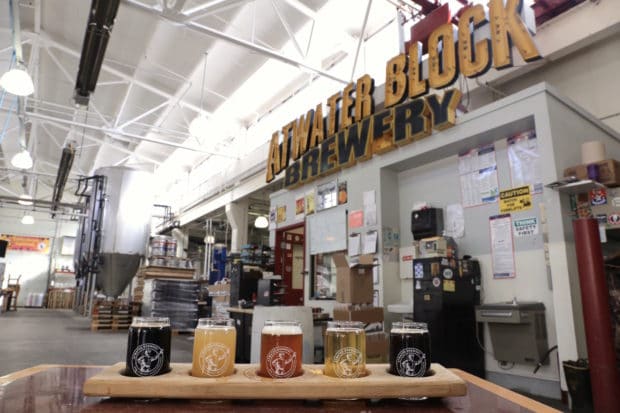
Craft Brewery Hopping
Detroit’s craft beer scene is as vibrant as ever, with old school favs and new sud-sloshers working together in harmony to promote the city as a hoppy haven. I visited Detroit’s top five craft breweries which can be found sprinkled throughout several of the city’s colourful neighbourhoods. We began at Detroit’s oldest brewery Traffic Jam & Snug (where they rotate through producing hand crafted beer and artisanal cheese using the same equipment) and finished at Atwater Brewery, a favourite spot for locals to sip suds, play games and munch through German-inspired fare.
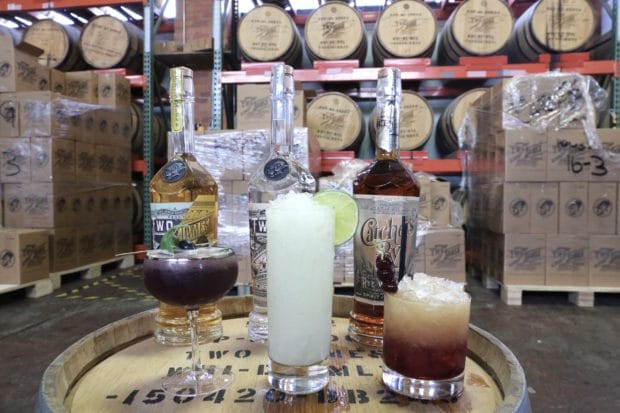
Two James Distillery
Cocktail fans feeling a bit faint should head straight to Two James Distillery for a thirst quench. Enjoy a tour and tasting of the first licensed distillery in Detroit since prohibition before hopping up at the bar for a few craft cocktails. Two James crafts its spirits from locally sourced grains, serving up award winning 100% Rye Whiskey, smokey blended whiskey, bourbon, gin (as well as a barrel-aged version), mescal (made traditionally in Oaxaca), and a true absinthe. Highlights from my magically blurry moment at the bar include blueberry and gin muddled Blue Wren, vodka and kiwi infused Weekend at Bernie’s and brandied cherry juice, peanut marzipan and rye whiskey shaken Uptown Pineapple.

Detroit Institute of Arts
The Detroit Institute of Arts (DIA) has been a beacon of culture for the Detroit area for well over a century. Founded in 1885, the museum was originally located on Jefferson Avenue, but, due to its rapidly expanding collection, moved to a larger site on Woodward Avenue in 1927. The new Beaux-Arts building, designed by Paul Cret, was immediately referred to as the “temple of art.”
The museum covers 658,000 square feet that includes more than 100 galleries, a 1,150-seat auditorium, a 380-seat lecture/recital hall, an art reference library, and a state-of-the-art conservation services laboratory.
The DIA’s collection is among the top six in the United States, comprising a multicultural and multinational survey of human creativity from prehistory through the 21st century. Among the DIA’s notable acquisitions: Mexican artist Diego Rivera’s Detroit Industry fresco cycle, which Rivera considered his most successful work, and Vincent van Gogh’s Self Portrait, the first Van Gogh painting to enter a U.S. museum collection.
A hallmark of the DIA is the diversity of the collection. In addition to outstanding American, European, Modern and Contemporary, and Graphic art, the museum holds significant works of African, Asian, Native American, Oceanic, Islamic, and Ancient art. Among these are the masterpiece sculpture Nail Figure from Zaire and a rare Korean Head of Buddha.
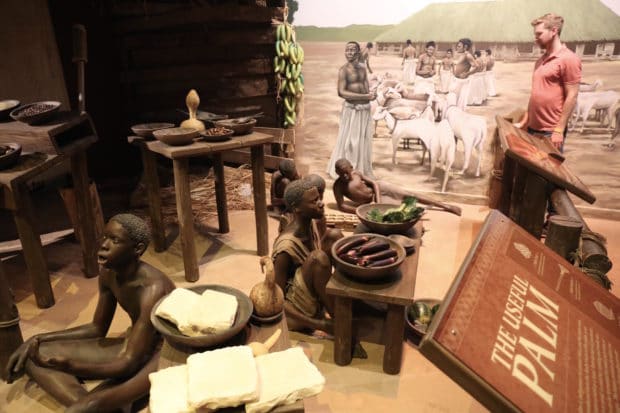
Charles H. Wright Museum of African American History
The Charles H. Wright Museum of African American History is the world’s largest institution dedicated to the African American experience. The museum houses over 35,000 artifacts and archival materials and is home to the Blanche Coggin Underground Railroad Collection, Harriet Tubman Museum Collection and a repository of documents of Detroit’s labor movement.
The museum’s signature experience, And Still We Rise: Our Journey Through African American History and Culture is an interactive exhibit taking up over 22,000 square feet and featuring more than 20 galleries. The journey allows patrons to travel over time and across geographic boundaries.
The journey begins in Africa, the cradle of human life. Witness several ancient and early modern civilizations that evolved on the continent before crossing the Atlantic Ocean. Experience the tragedy of the middle passage and encounter those who resisted the horrors of bondage, emancipated themselves and sometimes took flight by way of the Underground Railroad. The exhibit ends with a portrait of smiling President Barrack Obama and First Lady Michelle.
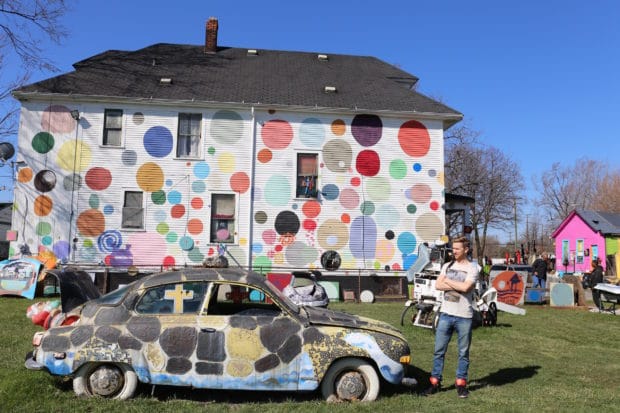
The Heidelberg Project
The Heidelberg Project is a Detroit-based community organization designed to improve the lives of people and neighborhoods through art. The neighbourhood in which it sits was once one of America’s poorest zip codes and today inspires curious visitors as an outdoor community art project.
The HP is the brainchild of native Detroit artist Tyree Guyton. It began in 1986 and was originally designed as a creative response to ongoing blight and decay in the neighbourhood in which he grew up.
The elements of the canvas contain recycled materials and found objects, most of which were salvaged from the streets of Detroit. Each work of art is carefully devised to tell a story about current issues plaguing society. As a whole, the Heidelberg Project is symbolic of how many communities in Detroit have become discarded. It asks questions and causes the viewer to think. When you observe the Heidelberg Project, what do you really see? Is it art? Is it junk? Is it telling a story?
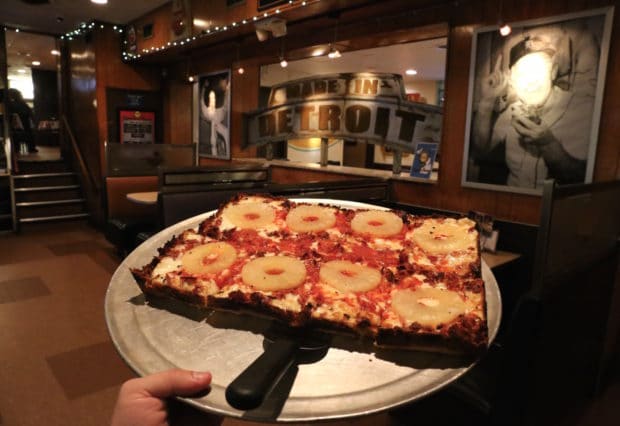
Buddy’s Pizza
In the 1930s, Buddy’s existed as a “blind pig,” skirting the State and Federal laws that governed the on-site sale and usage of alcohol. Booze was available there. In 1944, the owner turned the blind pig into a legitimate tavern, but with World War II still raging, business was suffering. In 1946, Sicilian style pizza was added to the menu. Soon the neighbours, and out-of-towners, were becoming hooked on Buddy’s unique recipe. The legend of Detroit’s Original Square Pizza was born.
Today, more than 70 years since the introduction of “Detroit’s Original Square Pizza,” consistently voted number one for decades, Buddy’s continues to thrive. With numerous locations throughout metro Detroit, Buddy’s Pizza still claims the hearts and taste buds of scores of Detroit-area pizza lovers. It’s not uncommon for ex-Detroiters to make a stop at Buddy’s when they visit the Motor City. Buddy’s has been recognized as one of the “Nation’s Five Best Pizza Places” by The Food Network, named the “Hottest Independent Pizzeria in the Nation” by Pizza Today, GQ Magazine called Buddy’s “One of the best 25 Pizzas in America,’ and was also named “One of the 25 Best Pizza Spots in the U.S.” by Food & Wine Magazine.
Enjoy a pizza pilgrimage to the chains original location and you’ll feel as though you’ve stepped back in time. Sip on a cool pint of local craft beer while chowing down on a pineapple and bacon adorned cheesy square slice. It’s pretty darn unforgettable!
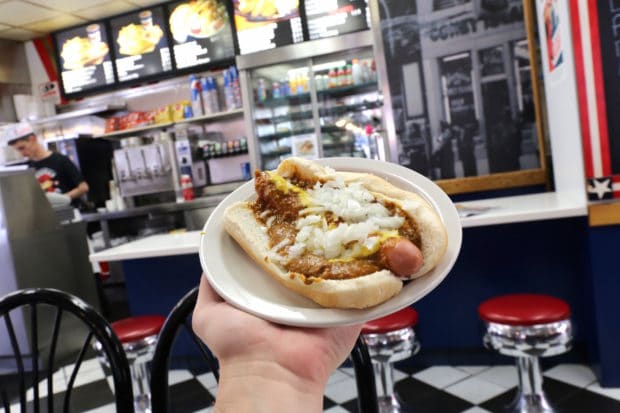
American Coney Island
American Coney Island is Detroit’s oldest family-run restaurant and the original home of the city’s famous Coney dog. For locals in Detroit the now iconic cheap and cheerful dish is the equivalent to poutine for a Montrealer and a must try for any foodie visiting the city. The restaurant interior is very Americana, featuring red, white and blue accents in an old school diner atmosphere. Check out the wall when you walk in and you’ll find a zillion photos of celebrities who have downed one of their famous dogs.
So what are you ordering exactly? The classic Coney features a natural casing hot dog in a steamed bun dressed with sloppy chili, diced onions and yellow mustard. Finger, licking, goodness!
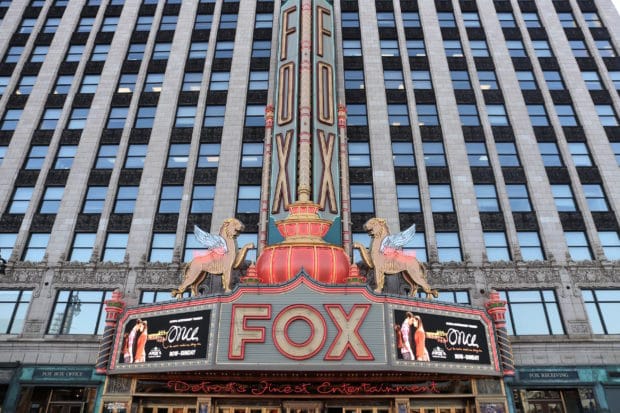
The Fox Theatre
As the second largest theatre in existence today, Detroit’s Fox Theatre has reigned as the city’s crown jewel among its theatre district for more than 85 years. A testament to the Golden Age of Hollywood, it is a primary example of the American movie palace providing generations an escape from reality through its opulent and grandeur architectural wonder.
William Fox, founder of Fox Film Corporation (later 20th Century Fox), opened the Fox Theatre on September 21, 1928 after only 18 months of construction. Detroit was the second of five movie palaces Fox built throughout the United States. Carrying a price tag of $12 million, according to newspaper clippings.
One of the world’s leading movie house architects, C. Howard Crane, designed the theatre and of his 52 theatres, the Fox was considered his most beautiful. Deemed a “temple of amusement” in early newspaper accounts, the interior is described as “Siamese-Byzantine.” which is a conglomeration of Far Eastern, Egyptian, Babylonian and Indian themes from various eras, and embellished in “gold” leaf, hand-stenciled walls, leather-lined elevators, velvet throne chairs and intricately-cast brass ornamentation.
We lucked out as the award winning Broadway musical Once was in town during our visit. I highly suggest planning your road trip to Detroit around what’s playing at The Fox as it’s certain to be a theatre experience you’ll never forget!
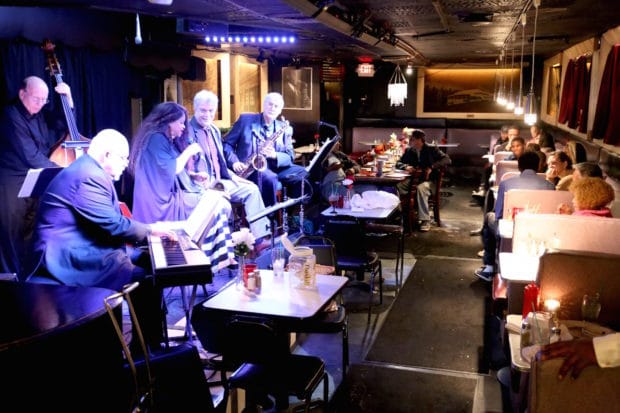
Baker’s Keyboard Lounge
Fancy spending a night sipping a martini and munching on soul food at the world’s oldest Jazz Club? Baker’s Keyboard Lounge, just 20 minutes drive north of downtown Detroit is noted for its long history of presenting local and major jazz acts, its excellent acoustics, its intimacy – seating only 99, its Art Deco furnishings, including a distinctive, piano-shaped bar painted with a keyboard motif, Art Deco style paintings of European city landscapes by Harry Julian Carew, tilted mirrors that allow patrons to view the pianist’s hands, and its Steinway piano. The club still displays its original liquor price list from 1934, showing the price of beer at 26 cents!
Baker’s Keyboard Lounge has hosted the greatest names in blues and jazz. Some of the musicians who have played the club include Ella Fitzgerald, Miles Davis, Oscar Peterson, George Shearing, Sarah Vaughn, Joe Williams, Maynard Ferguson, Cab Calloway, Woody Herman and Nat “King” Cole.
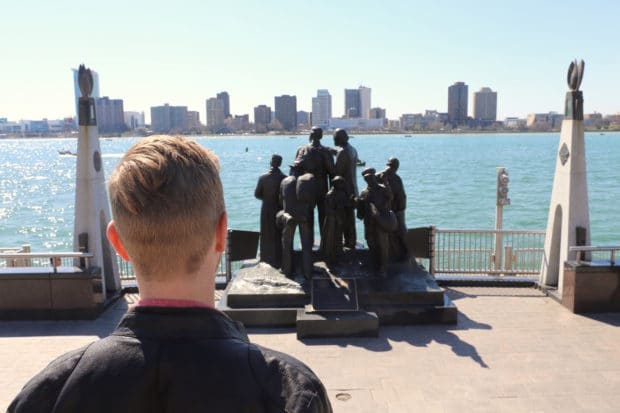
Hart’s Plaza
For generations, Hart Plaza has been a long-time city riverfront destination and venue for summer festivals, concerts and special events. The 14-acre plaza, which is named for the late U.S. Senator Philip Hart, opened in 1975 and has a capacity of 40,000 people. At the center of the plaza is the famed Horace E. Dodge and Son Memorial Fountain, designed by Isamu Noguchi in 1978.
One of the most photographed icons of the city can be found overlooking the plaza. “The Fist” is a monument to Joe Luis, a memorial to Detroit’s beloved boxer. Dedicated on October 16, 1986, the sculpture, commissioned by Sports Illustrated Magazine from the Mexican-American sculptor Robert Graham, is a 24-foot-long arm with a fisted hand suspended by a 24-foot-high pyramidal framework. It represents the power of his punch both inside and outside the ring. Because of his efforts to fight Jim Crow laws, the fist was symbolically aimed toward racial injustice.
Located on the riverfront of Hart Plaza, the Gateway to Freedom International Memorial to the Underground Railroad features a group of African American slaves peering over the river towards Windsor Ontario. Several routes of the Underground Railroad went through Michigan. Detroit’s terminal, whose code name was Midnight, was one of the largest terminals of the Underground Railroad. At first, Michigan was a destination for freedom seekers, and by the mid-1830s, there was a modest population of former slaves living there who aided other former slaves to escape to freedom. However, Canada became a safer sanctuary after slavery was abolished there in 1834. With passage of the Fugitive Slave Act in 1850, many runaways left their homes in Detroit and crossed the river to Canada to remain free.
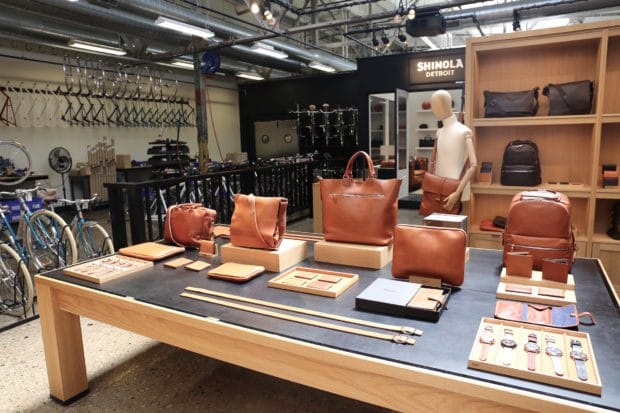
Shinola Boutique
Detroit’s most beloved boutique can be found in Midtown right beside craft beer loving Traffic Jam & Snug. Shinola is the city’s most recent success story with stores now bustling across America and Europe. The brands flagship store in Detroit is a design nerds dream featuring beautiful leather bags, handsome watches, pretty leather bound journals and an impressive fleet of the brands iconic bicycles. Be sure to pop by in the morning to grab a frothy latte and fresh pastry at the boutiques luxurious cafe.

